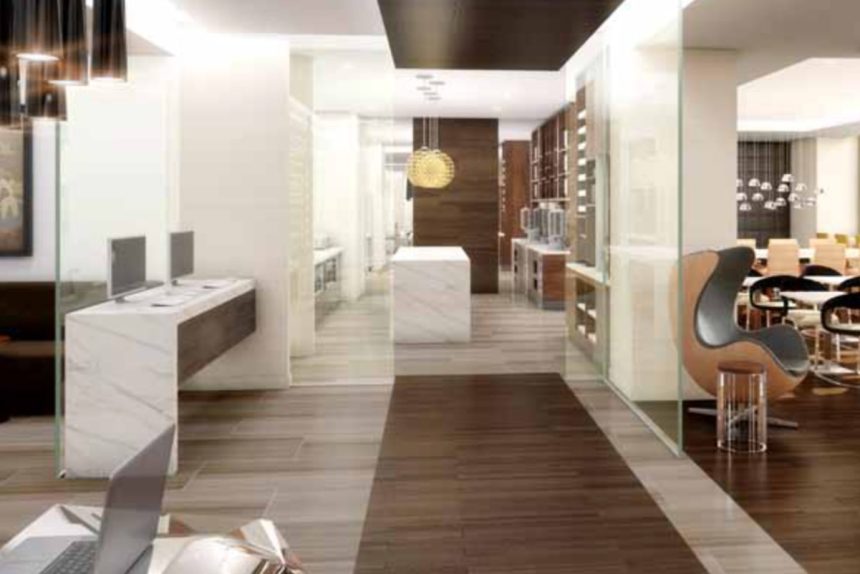Hilton Worldwide executives teased on Wednesday that they expect to announce a new apartment hotel brand within the next couple of months. The move will come as the operator continues to expand its portfolio beyond premium and luxury hotel brands, such as Waldorf Astoria and Conrad.
“The product that we’re developing… we’ve done 99 percent of the work,” said Chris Nassetta, president and CEO, in a call with analysts. “It’s almost a hybrid. It’s like an apartment efficiency meets hotel.”
The new brand will be all new construction rather than conversions, at least at first.
hotel
Daily Lodging Report
Essential industry news for hospitality and lodging executives in North America and Asia-Pacific. Delivered daily to your inbox.
Show Me More
“So you’re talking about average length of stay of probably 20 to 30 days on average versus most of the core extended-stay brands, which are like the 5 to 10 range,” Nassetta said.
This long-stay hotel would represent Hilton’s 20th brand.
“This is hundreds and hundreds and hundreds of hotels over time,” Nassetta said. “This is not like we’re going to do 50 or 100 of these. You’ll wake up over time in 10 years, and it will be like Home2 [is today].”
The move comes as more activity happens in the extended-stay and long-stay segments because of a lack of U.S. supply. Earlier this month, Hyatt announced the debut of a brand, Hyatt Studios, as its first entry in the segment. Since October, Wyndham launched ECHO Suites by Wyndham, and BWH launched @Home by Best Western. Category leader Extended Stay America has added brands in the past couple of years.
“While a lot of people are doing things in this arena, we’ve proven we have launched brands pretty well that get to scale and build a network effect,” Nassetta said. “We’ve done that as well or better than anybody.”
The comments came during a first-quarter earnings report where the McLean, Virginia-based company continued to see a strong hunger for travel through the end of 2022 thanks to a post-pandemic travel boom — particularly from domestic and outbound U.S. travelers.
Hilton executives believe that the way people work has permanently changed with hybrid options encouraging changed travel behaviors. (For context, Skift noted this as a megatrend this year: “Blended Travel Comes of Age.”)
“There are so many workforce housing needs that are just unmet with this kind of product for somebody who needs to be somewhere 30, 60, 90, 120 days,” Nassetta said. “It’s not competitive with what we’re doing with Home2 and certainly not competitive with Homewood because it’s serving a totally different need [than our other brands], mostly in totally different markets, … for a different demand base, in different types of locations.”
Spark Bigger Than Hampton Inn Someday?
Earlier this year, Hilton debuted Spark by Hilton, a premium economy brand. Nassetta gave some color on how that brand is stealing share so far. He said that of the roughly 300 announced properties, only a “teeny number” are conversions from Hilton’s other brands. Only “a little bit” is independent properties changing to Spark.
“It’s almost all coming from other brands in the economy space,” Nassetta said.
The upcoming extended-stay product will join Spark by Hilton in offering a product at lower average rates than the company’s flagship brands. Given the lower rates and franchise or management fees in these segments, why bother expanding down the chain scale?
“The ultimate potential of Spark is bigger than Hampton because it’s a bigger slice of the pie,” Nassetta said. “Long term, we think Spark is probably the most disruptive thing that we’ll have ever done in terms of giving customers, at that price point, a really good product.”
“This is a massive customer acquisition tool for us,” Nassetta said. “There are 70 million or 80 million people traveling in this segment, half of whom are younger people that travel, and this is all they can afford. And while we serve some of them, we’re not serving many of them. So the opportunity is for us to get them hooked on our system early. … We bring in tens of millions of new customers that are going to trade up. They’re going to grow up, and they’re going to use our other products.”
When other hotel companies have shifted downmarket, they’ve often seen higher attrition rates or deletion rates from owners, meaning more churn in their portfolio as owners are relatively less consistent in sticking with brands at the lower end of the chain scale. But Hilton executives said they weren’t concerned.
“We have very little attrition, meaning losing hotels out of the system,” Nassetta said. “[When a] Hampton [exits our system], their time is up. They’re in a location or a physical state that we just don’t think works anymore. And so that’s by our choice. If you go through the whole list of all our brands, such as Home2, Homewood, Hampton, and Tru, the attrition there is almost none, and the vast, vast majority of it is by our choice.”
“The reason we have very little attrition is our mega category brands are category killers,” Nassetta said. “They drive incredibly high share. So as we think about Spark, as we think about our new extended-stay brand, we have to get it right, which we will. We have to drive really high share, which we will. The product has to really work for customers, which is what drives that.”

